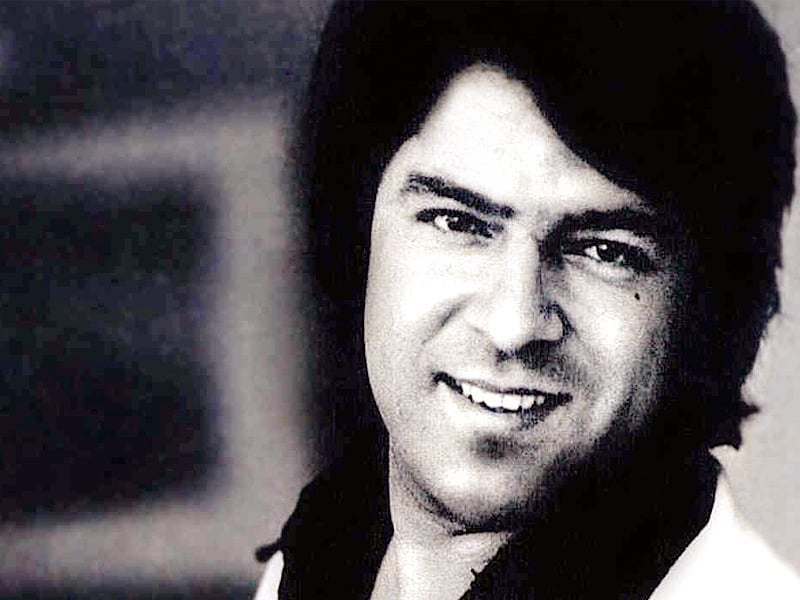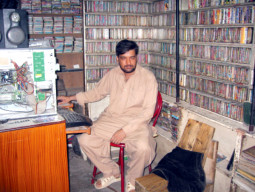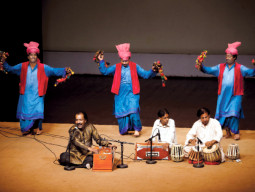
PESHAWAR/ KARACHI:
Coke Studio’s recently unveiled Laili Jaan may be a groovy new number with an impressive brass section, but the roots of this song go way back, across the Durrand Line.
At a time before Afghan musicians had fled the country due to Taliban threats, and were still celebrated icons for teenagers, one man’s name topped the list of legends. Ahmad Zahir’s tomb was crushed by the Taliban in the mid 90s, but his phenomenal music still lives on and the Coke Studio rendition pays tribute to Afghan music’s very own Elvis.
………………………………………………………………………………………………………………………………………
………………………………………………………………………………………………………………………………………
A cultural trendsetter
“He was a true rebel — someone who wore no masks to conceal what he was saying. That is why everyone called him the ‘torch-bearer of transformation’,” Dr Khadim Hussain, managing director of Bacha Khan Foundation tells The Express Tribune.
Dr Hussain’s observation evidences Ahmad’s arrival into the Afghan music scene, which was quite similar to that of Pakistani pop legend Alamgir, who changed the monotonous video presentation of PTV in no time. Ahmad’s charm and Elvis-inspired sideburns heralded a new dawn for pop music in Afghanistan, and he became someone people related hope and eagerness with.
“In his voice and style you’ll find the ideal synthesis of sur and music,” Hussain continues.
The most important thing about the synthesis is that he did it all with utmost ease, while remaining within the realms of the sound of the soil. That is perhaps the reason why the mainstream Dari music listener accepted this Elvis look-alike for who was way ahead of his time.
This charm was even reflected in some of his Urdu and English covers. This version of the popular Bollywood number Mae Shayar Tau Nahin says it all.
Known for his outrageous stage antics, Ahmad was very picky in terms of wardrobe — he perfected his look each time he appeared in front of the camera. He would alter his wardrobe according to the raag he was singing instead of the video or concept.
“Something being sung in raag Bhairavi was presented quite differently than something being sung in Pilu, and he had his own ways of deciding that,” says Dr Hussain.
Apart from this genius, another important influence on fusion music in the region came from the Russian occupation of Afghanistan.
“More than an authoritarian and political occupation, the Soviet occupation had a major impact on traditional Afghan culture,” says Dr Israr Atal, a professor of Pashto literature at the Government College Peshawar. "From the impact on language to cuisine, everything was influenced by the Soviet invasion. But culturally, the most important factor was the arrival of Russian and Central Asian music instruments.”
With the addition of instruments like the soothing accordion and the long-necked Russian instrument domra after the Soviet invasion, Afghan music was gearing up for a major redefinition. However, it needed a genius like Ahmad to do the honours.
Check out this Darri blues number to see for yourself.
His phenomenal performance on the accordion, within the dynamics of the orchestra, actually made ethnic pop music of Afghanistan stand out musically from what was being created in Pakistan. It was no longer the difference of Dari and Pashto poetry that separated them, but a different set of musicians altogether.
Humayoon Khan, a Pashto musician well-known in both Afghanistan and Pakistan who rose to fame with his funk version of Larsha Pekhawar Ta in Coke Studio 5, will be releasing a cover of one of Ahmad’s songs in his upcoming album. “His use of orchestra to re-render folk melodies really changed the way music was being produced in this region,” says Khan, who claims to be a big fan.
“Any pop musician, like me, will always be indebted to Ahmad, because he was the one who taught us how a pop icon is supposed to sing, perform and carry himself in the public eye,” he adds.
Here is the original video of Laili Jaan, a song that is still performed live at music evenings across Pakistan and Afghanistan.
………………………………………………………………………………………………………………………………………
………………………………………………………………………………………………………………………………………
Gulzar Alam, one of the most senior Pashto ghazal singers from Pakistan, believes that it was the tone of his voice and his outlook towards pop music that changed everything in the earlier years of his music. “His songs were noted for a honeyed tone, poetic style, compelling depth and a passionate and emotional evocation,” says Alam.
Dr Atal, however maintains that Zahir’s music managed to inspire both parallels of the region’s music industry; the classical side and also pop musicians. He believes that his impact on ghazal singers like Khyal Muhammad and Gulzar Alam is as relevant as his impact on modern singers like Haroon Bacha and Karan Khan.
“Though years have passed since he left us, even today people are still busy remixing his music. This tells you about the magnanimity of his stardom,” says Bakhtiar Khattak, a fresh voice that entered the Pashto music scene in early 2000. “He is more of a spiritual guide and easily the irreplaceable epitome of Pashto pop-rock music,” he says.
In the later years of his career, Ahmad switched from performing ballads and folk poems, to coming up with politically-provocative music — a fact which irked the communist government of Afghanistan in the late ’70s.
Death and legacy
Alam believes it’s a little far-fetched to claim that Ahmad had a major influence on the Pashto music scene in Pakistan, but nonetheless considers his demise a great loss to the music of this region at large.
In 1979, Ahmad was assassinated on June 14, which was also his birthday. Many believe he was murdered on the orders of the communist government in retaliation to the political criticism in his albums. “Against the Afghan tradition, a huge number of women attended his funeral. This pretty much says everything about his cultural influence,” recalls Alam.
The Afghan musician’s career spans over 22 music albums, with 10 being private releases. Music videos of two of his songs, Laili Jaan and Khuda Bowad Yaret, were aired on national television. His cover of Bimbo Jet’s El Bimbo called Tanha Shodam was also featured in The Kite Runner.
Published in The Express Tribune, November 17th, 2013.
Like Life & Style on Facebook, follow @ETLifeandStyle on Twitter for the latest in fashion, gossip and entertainment.
COMMENTS (11)
Comments are moderated and generally will be posted if they are on-topic and not abusive.
For more information, please see our Comments FAQ






















































*I dont know when'll the problem finish regarding "Afghan" in terms of nationality, grow up guyz i heard it many times even during a match Rameez Raja said Afghanistani players. What if an Afghan calls you "Rupees people" which is wrong.(Great Ahmad Zahir) was given the title of "East's Golden Voice" title by Lata Mangeshwar and Mohammad Rafi and also the Iranians were the biggest fans of our One and Only mr.Zahir, *
he must have used Afghan, instead of Afghani. ET and the author must take care of nomenclatures. otherwise a very good article.
Since the link to the last song mentioned doesn't work. Here is a youtube link to it: http://www.youtube.com/watch?v=Z7QRgzeFu3I
vey nice. please note afghani is the currency - the correct term is Afghan ! shandana khan from mardan, pukhtunkhwa
Ahmad Zahir was the son of Dr. Zahir who served as the prime minister of Afghanistan under Zahir Shah.
Ahmad Zahir was a Dari speaking Pashtun and his music was loved by all Afghans not just Dari speakers.
He was assassinated because he was having an affair with the daughter of a powerful Khalq Party member.
The accordion and domra were already being played by musicians in Afghanistan long before the Soviet invasion. Ahmad Zahir died before the Russians invaded.
Dr. Israr Atal's assessment of Russian influence on Afghan culture, cuisine and music is offensive and inaccurate..
Attention Editor! Afghani is = Currency of Afghanistan Afghan is = Nationality of Afghanistan
It's such a pity that people next door don't know the correct usage of this extremely common term. Please notice and edit! Thanks to the writers for such an important and interesting piece.
This is a real service for people and fans on both sides of the Durrand lin.Thanks a lot Tribune :)
My youth have lost the ability to think beyond Bollywood. Afghanistan will give us freedom. Freedom to think freely. which we lost due to influence of Bollywood